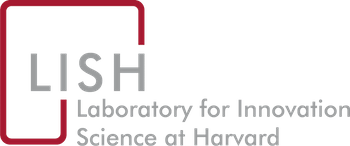This article examines an experiment in open innovation applied to scientific research on Type 1 diabetes at Harvard Medical School. In the traditional research process in academic medicine, a single research team typically carries through each stage of the process — from generating the idea to carrying out the research and publishing the results. Harvard Catalyst, a pan-Harvard agency with a mission to speed biomedical research from the lab to patients' bedsides, modified the traditional grant proposal process as an experiment in bringing greater openness into every stage of research. Participation was successfully extended to nontraditional actors. With support from Dr. William Chin, the executive dean for research at Harvard Medical School and a former vice president of research at Eli Lilly (an early adopter of open innovation), Harvard Catalyst started with the front end of the innovation system by opening up the process of generating research questions. Instead of focusing on identifying individuals who might tackle a tough research problem, Harvard Catalyst wanted to allow an open call for ideas in the form of a prize-based contest to determine the direction of the academic research. This might lead to potentially relevant questions not currently under investigation or largely ignored by the Type 1 diabetes research community. Harvard Catalyst partnered with the InnoCentive online contest platform to initiate the idea generation process. Participants had to formulate well-defined problems and/or hypotheses to advance knowledge about Type 1 diabetes research in new and promising directions. In the end, 150 new hypotheses and research pathways were proposed. Teams were invited to propose projects on the 12 most promising of these; today, seven teams are carrying out the research. The Harvard Catalyst experience suggests that open-innovation principles can be adopted even within a well-established and experienced innovation-driven organization.
Contest
. 2013. “Experiments in Open Innovation at Harvard Medical School.” MIT Sloan Management Review 54 (3). Publisher's VersionAbstract
. 2011. TopCoder (A): Developing Software through Crowdsourcing (TN). Harvard Business School Teaching Notes. Harvard Business School. Publisher's VersionAbstract
. 2017. “Stepwise Distributed Open Innovation Contests for Software Development: Acceleration of Genome-Wide Association Analysis.” GigaScience, 6, 5, Pp. 1-10. Publisher's VersionAbstract
. 2016. “Innovation Experiments: Researching Technical Advance, Knowledge Production, and the Design of Supporting Institutions.” In Innovation Policy and the Economy, 16: Pp. 135-167. Chicago, IL. Publisher's VersionAbstract
. 2012. “The Confederacy of Heterogeneous Software Organizations and Heterogeneous Developers: Field Experimental Evidence on Sorting and Worker Effort.” In The Rate and Direction of Inventive Activity Revisited, . Chicago, IL: University of Chicago Press. Publisher's VersionAbstract
. 2014. Netflix: Designing the Netflix Prize (A). Harvard Business School Case. Harvard Business School. Publisher's VersionAbstract
. 2013. Open Innovation at Siemens. Harvard Business School Case. Harvard Business School. Publisher's VersionAbstract
. 2017. “Perceived Organizational Support For Learning and Contribution to Improvement by Frontline Staff.” Academy of Management Proceedings, 2017, 1. Publisher's VersionAbstract
. 2013. “Prize-based Contests Can Provide Solutions to Computational Biology Problems.” Nature Biotechnology, 31, 2, Pp. 108-111. Publisher's VersionAbstract
. 2015. Innovating with the Crowd. Harvard Business School Case. Harvard Business School. Publisher's VersionAbstract
. 4/2019. “Incentives for Public Goods Inside Organizations: Field Experimental Evidence.” Journal of Economic Behavior & Organization, 160, Pp. 214-229. Publisher's VersionAbstract
. 2016. “Performance Responses to Competition Across Skill-Levels in Rank Order Tournaments: Field Evidence and Implications for Tournament Design.” The RAND Journal of Economics, 47, 1, Pp. 140-165. Publisher's VersionAbstract
. 2011. “Incentives and Problem Uncertainty in Innovation Contests: An Empirical Analysis.” Management Science, 57, 5, Pp. 843-863. Publisher's VersionAbstract
. 2011. TopCoder (B). Harvard Business School Case Supplement. Harvard Business School. Publisher's VersionAbstract
. 2010. TopCoder (A): Developing Software through Crowdsourcing. Harvard Business School Case. Harvard Business School. Publisher's VersionAbstract
